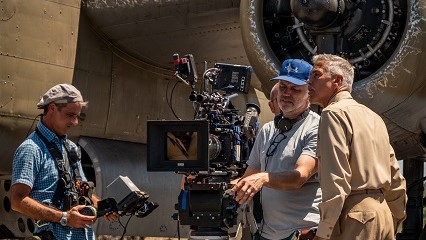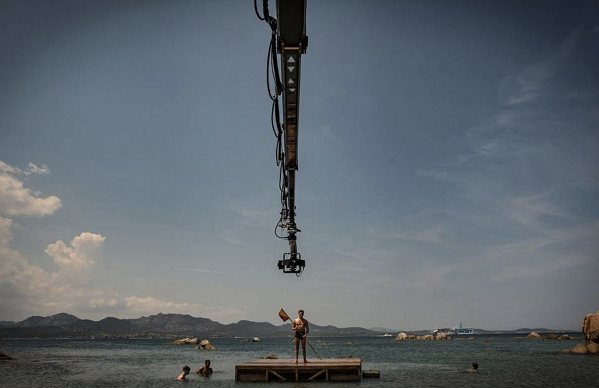Hulu's 'Catch 22' Captures WWII Cockpits With Cooke Optics Lenses
LEICESTER, England—The new six-episode miniseries “Catch-22,” which premiered in mid-May, is being shot with two ARRI ALEXA Mini cameras and two sets of Cooke Optics’ S4/I prime lenses, the lenses maker said this week.

The Hulu miniseries, based on Joseph Heller’s 1961 novel “Catch-22,” is directed by Grant Heslov, Ellen Kuras and George Clooney with cinematography by Martin Ruhe.
Unlike the 1970 “Catch-22” film, the miniseries is a dark comedy that conveys the perilous missions of U.S. Army Air Corp. aviators during World War II.
“We all looked at the original film, and the two projects have a different nature,” said Ruhe. “Ours is a dark comedy with a strong look for a strong visual story, as compared to the original, which was more of a straight comedy. The aerial scenes had to show the intense horror of being up in those small tin boxes. It had to be about life and death.”
His goal was to contrast the horror the aviators faced from enemy fire with the absurdity of what transpired on the ground. To make that happen, Ruhe used two identical sets of Cooke S4/iprime lenses—14mm, 18mm, 21mm, 25mm, 32mm, 40mm, 50mm, 65mm, 75mm, 100mm and 135mm focal lengths—shooting with the ARRI ALEXA Mini’s Super 35mm (2.8K) sensor in ARRI Raw 16:9 and later be finished in 4K HDR.
“We had two sets of camera/lens combinations as we were cross shooting, as well as having some days with splinter [second] unit shooting,” explained Ruhe. “While I used all of the lenses, the 32mm was my all-time favorite for close-ups inside the planes. Although, to be honest, I did have to move to the 50mm at times due to the limited space within those planes.”
The size of the Cooke S4/I prime lenses was important because Ruhe had to be “very fast and versatile” in close quarters. “I didn’t want to get stuck fighting minimal focus, and thanks to the S4/i’s, I didn’t,” he said.
Production designer David Gropman provided the production team with stills from Heller’s regiment as well as historical newsreel footage to show what life was like in the Allies’ camps.

During camera tests, the team took still images, which were loaded into Photoshop to match the old postcard look from the era. Company 3, which was responsible for digital intermediates, created LUTs for the cameras to match the look.
Both on the ground and in the air, Ruhe created a natural look, which was especially important inside the planes because he didn’t want them to be too perfectly lit. For ground interiors, a 120-foot-by-75-foot soft sail and gray screen were used with a 20K standing in for sunlight.
Episode six offers one of the standout scenes shot with the S4/i 32mm lens, he said. “It’s so close to the faces and so intimate, which I love. You’ll have to see it to understand it, but every DP out there will know what I’m talking about when they watch that episode. It just looks great.”
Get the TV Tech Newsletter
The professional video industry's #1 source for news, trends and product and tech information. Sign up below.
Phil Kurz is a contributing editor to TV Tech. He has written about TV and video technology for more than 30 years and served as editor of three leading industry magazines. He earned a Bachelor of Journalism and a Master’s Degree in Journalism from the University of Missouri-Columbia School of Journalism.

